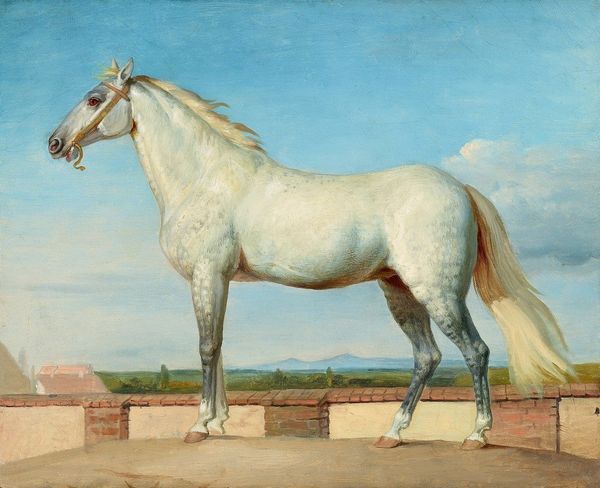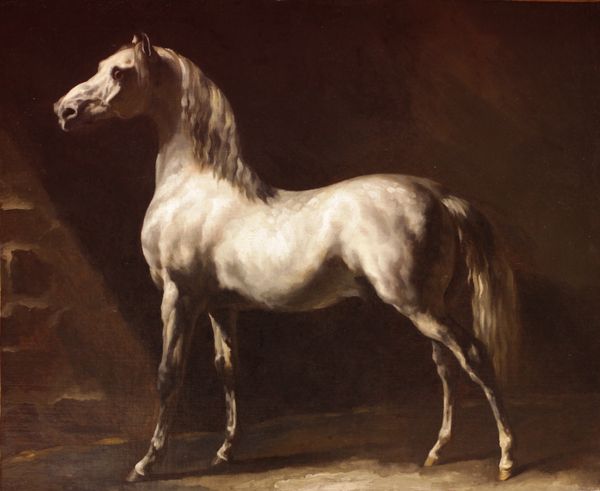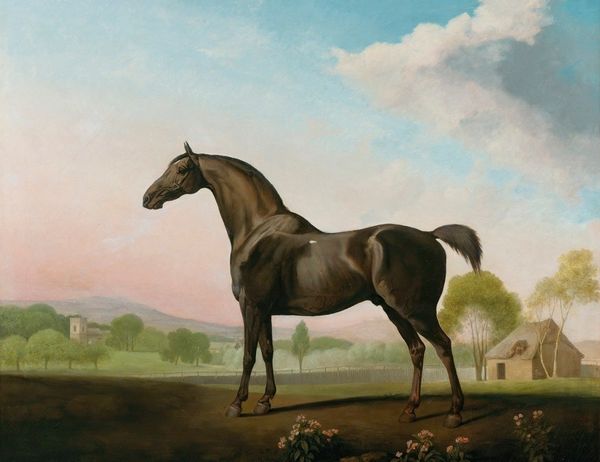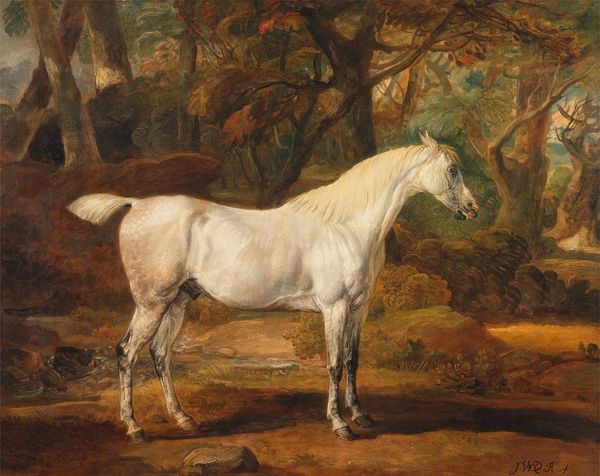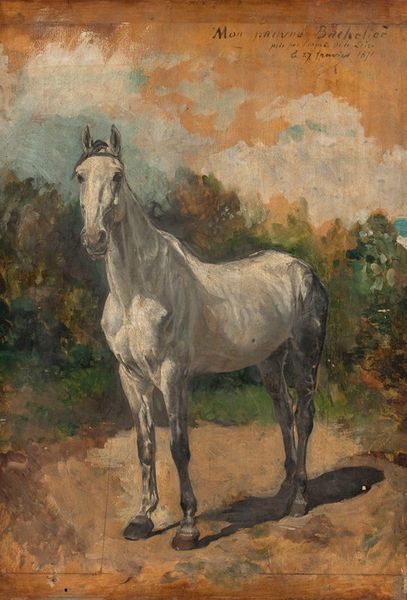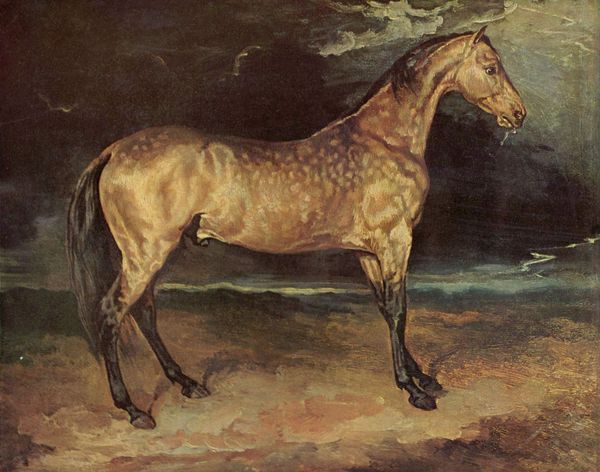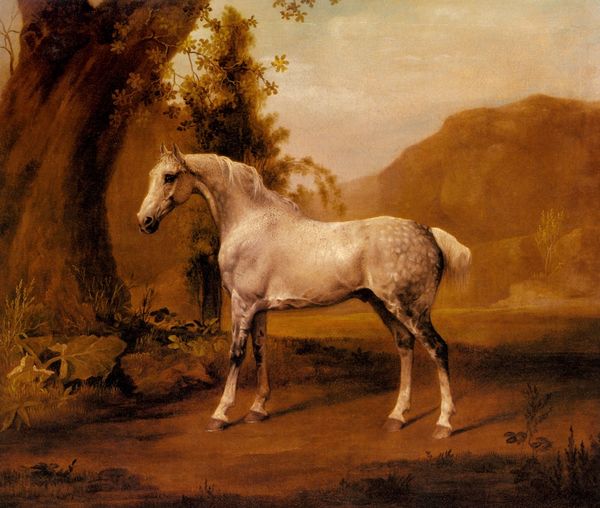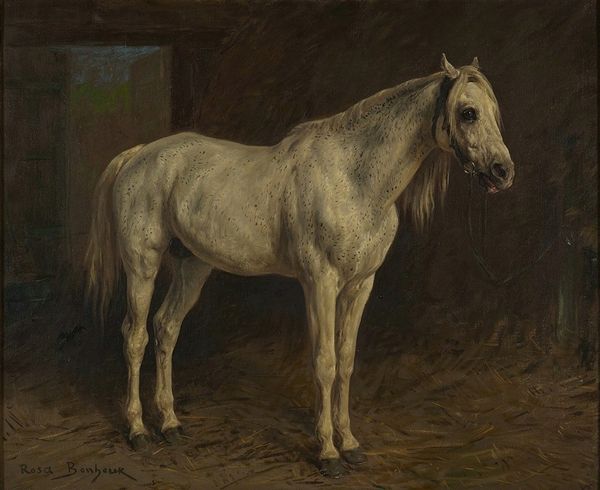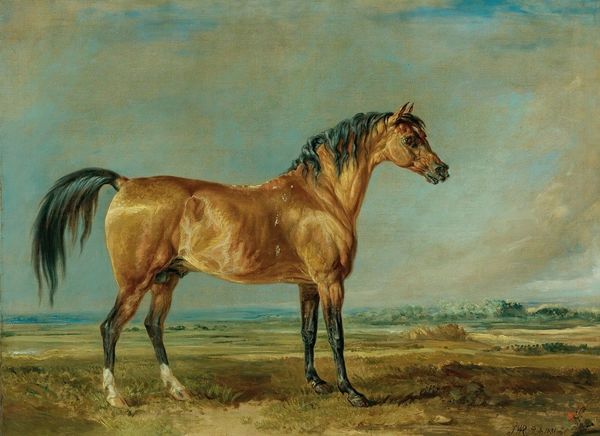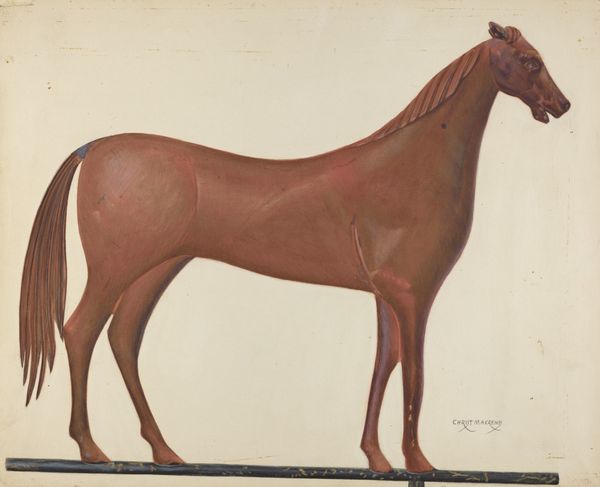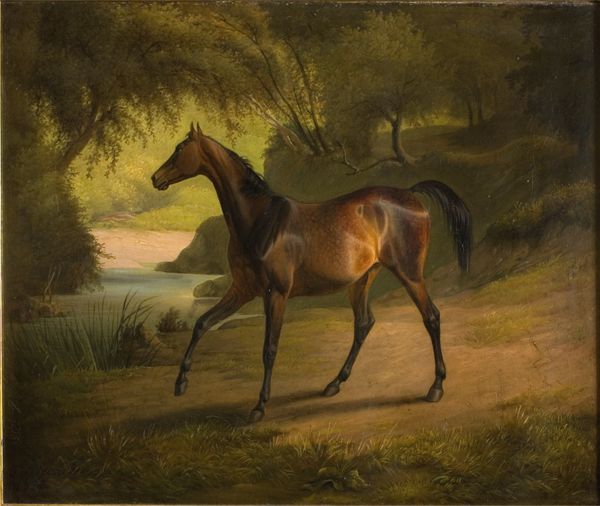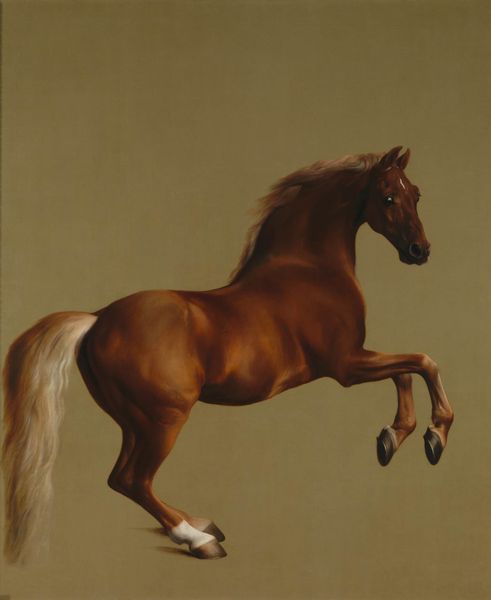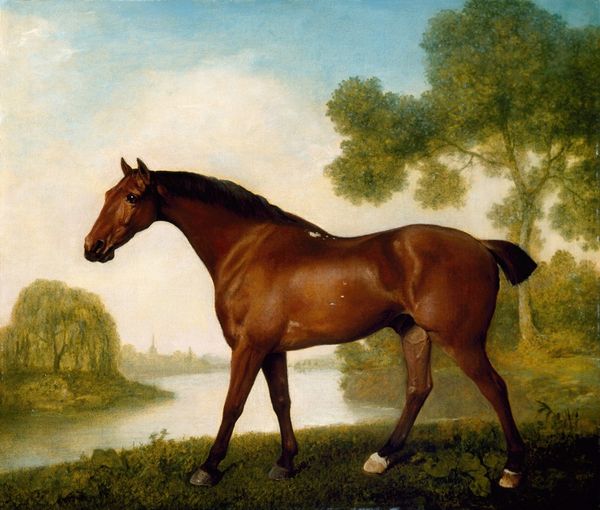
painting, oil-paint
#
portrait
#
animal
#
painting
#
oil-paint
#
landscape
#
oil painting
#
animal portrait
#
hudson-river-school
#
realism
Copyright: Public Domain: Artvee
Curator: Albert Bierstadt’s oil painting, "White Horse and Sunset," dates to approximately 1863, a fascinating moment in American history. Editor: It’s… strikingly stark. The horse seems almost luminescent against that brooding sky, doesn't it? There’s a loneliness, a certain melancholic feel. Curator: Precisely! Bierstadt was deeply embedded within the Hudson River School. Examining his artistic process through the lens of the materials used highlights the socio-economic context; pigment trade, the quality of canvas available… Even the way the light falls; it all suggests an idealized, Romantic view of the American landscape, particularly as manifest destiny advanced. Editor: The horse, though… It's not just a component of the landscape. Animal portraiture served a specific purpose. Consider the elite equestrian portraits. They functioned as a tool to cement status and portray political power, reflecting established authority. Curator: Yes, although Bierstadt’s horse here transcends pure representation. Its very materiality – the way he’s built up the paint, the layering of light – suggests something beyond mere likeness. Perhaps a statement about nature’s enduring strength against, or even in concert with, the inevitable shifts in social order. Editor: Or, conversely, considering its subdued colors in the dark environment, could he imply the end of an era through this pale animal? This might be a critique of what he believed to be social or environmental disruptions in the landscape during Westward Expansion. Curator: That's compelling. And the production of images themselves during this time–photographs, lithographs alongside paintings – were circulating widely and shaped public opinion about the West and its resources, its perceived 'untamed' state... Editor: It invites so many possible historical narratives. Each viewer must situate their understanding of these landscapes according to their background and knowledge. Curator: Indeed. Seeing through both process and placement makes such a difference in our experience. Editor: It has offered another way to appreciate it; understanding it from its period can only increase how viewers engage with art!
Comments
No comments
Be the first to comment and join the conversation on the ultimate creative platform.
